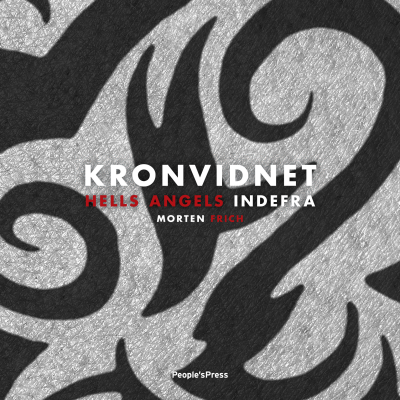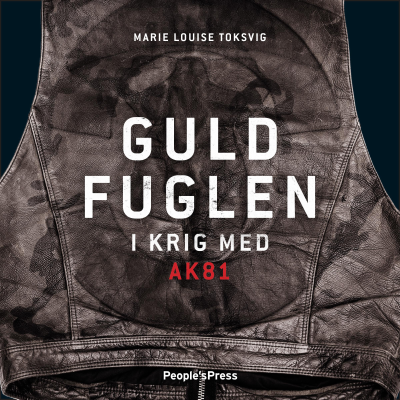Dette tilbud er desværre udløbet
Start din gratis prøveperiode nedenfor i stedet

Built Modular by Vanguard Modular Building Systems
Podcast af Vanguard Modular Building Systems
Welcome to Built Modular, a Vanguard Modular podcast. We'll help you discover just how flexible modular construction has become, and how it is helping make life better for real people facing real space challenges.
Prøv gratis i 7 dage
99,00 kr. / måned efter prøveperiode.Ingen binding.
Alle episoder
7 episoderA potential Vanguard Modular customer may know they need a modular building but not what the process will entail. When Vanguard constructs a modular building, it runs through these steps in the construction process: design and engineering, permitting, manufacturing, delivery, set, seam and utility connections, power up and turn on water, installation of decks, steps, ramps and other elements, the final punch list, and final occupancy. Vanguard [https://vanguardmodular.com/] has a history of success not only in modular buildings, said Jody Werner, the company’s Senior Vice President of Sales, but also in guiding clients through those processes. “You can have experience based on years, but you also have to experience based on knowing what the right things are to do through the process, the right steps to take, and communicating things to the customer to make sure there are no surprises,” Werner said. “The other thing is they want to know they’re entering into an agreement with a company that has the financial wherewithal to see the project through. That’s very important in today’s day and age.
Cooperative purchasing provides seamless purchasing and consistency for the relationship between Vanguard Modular Building Systems and its customers. Chris Brown [https://marketscale.com/industries/contributors/chris-brown/], an Area Sales Manager at Vanguard [https://vanguardmodular.com/], popped by Build Modular to discuss this solution for financing modular projects. “Cooperative purchasing is a procurement system,” Brown said. “It’s where a lead agency advertises for bids, awards a master contract to the vendor and for the prices to be extended to the registered members of the cooperative, and then notifies the members of the contract awarded. The registered members then contract directly with the vendor for their own needs subject to the specifications of the master contract.” So, if cooperative purchasing provides cost savings and reduces the hassle of the “go-it-alone” bid process, how does one become a member of such a cooperative? “Joining a cooperative is very easy for membership,” Brown said. “Most of the cooperatives, all you have to do is fill out a one-page application. There are no fees and no downside. It’s a simple as sign up and begin ordering.” Any public entity can become a member of counting organizations, such as municipalities, public and charter schools, colleges and universities, nonprofits, and governmental agencies. Many cooperatives are available, but one commonality they share is eliminating the need for businesses to go through the lengthy bidding process, which is the ultimate win.
A lack of information about today’s modular buildings can lead to a lot of confusion, misconceptions and missed opportunities regarding a sustainable, cost-effective solution. Vanguard Modular’s [https://vanguardmodular.com/] Senior Vice President of Marketing Services, Mark Meyers, joined the Built Modular podcast to dispel myths and provide answers that people should know when it comes to modular construction. While many people might think the typical way of obtaining temporary modular construction is to lease a building, Meyers noted many custom and permanent modular building projects are purchased. An even lesser-known, but viable option for people is "lease to own." “This option is a fantastic way to reduce the amount of initial capital that needs to be put out for a project and still end up owning the building,” Meyers said. What about costs for the various options for a typical new modular building project? The base leasing price ranges from $1-$1.50 per square foot per month. This pricing does not include delivery, on-site assembly or project completion tear-down costs. “Customized modular projects tend to be purchases,” Meyers said. Those ranges can vary depending on the myriad factors of the design needs. Meyers provided a ballpark purchase price range between $100-$300 per square foot, not including delivery and installation. Meyers said modular construction shares many similarities with traditional building processes. However, unlike conventional construction projects, modular buildings are built in sections off-site and delivered to the site destination and then assembled. And one of the things Vanguard Modular does is keep track of each state’s building codes and regulations. “All of those calculations are carefully put together and engineered in the design of the building to ensure that the structure does meet those codes before those buildings are moved out from the manufacturing facility and installed on the site," Meyers said.
In the last five years, a design trend has emerged. Facilities like data centers and other solutions needed for high-tech industries are looking to match their demand with their infrastructure, TAS Energy [https://www.tas.com/] CEO JT Grumski [https://marketscale.com/industries/contributors/jt-grumski/] said, making speed to market a critical factor for builders. TAS is able to lean on its large facilities in Houston and sleek supply chain to make sure it’s able to deliver the solution when the client needs it. “We have all the phases that would traditionally go into a stick built, but we do them in a very shortened schedule in our factory,” Grumski said. He also praised the amount of experience and intellectual property TAS has acquired over the years to meet customer demands thanks to decades working with high-tech companies. That won’t change, even as TAS changes hands after this year’s acquisition by Comfort Systems [https://comfortsystemsusa.com/]. “Part of my job as the CEO was to find a long-term owner for the business that would ensure the seamless continuity for our customers, provide additional capabilities and resources, and also provide expanded growth opportunities for our employees,” Grumski said. “I’ll tell you, with Comfort Systems, I firmly believe we’ve found the ideal, long-term, strategic owner for TAS.” Grumski found that Comfort Systems is committed to maintaining the current culture, confidence in modular solutions and desire to keep the current management team with no disruptions to projects. It’s clear modular solutions will continue to grow, and TAS can continue to boast one of the most effective and experienced teams in the industry.
An August 2019 report from the commercial construction index showed the modular construction industry doubling its growth over the past five years. Now an $8-billion industry, modular construction is experiencing even more growth with the onset of the pandemic, with the need for health centers to build quick and efficient solutions for emergency treatment facilities and other solutions growing. What considerations drive the costs associated with these projects, and how do businesses strategize around these costs? Paul Lubertine [https://marketscale.com/industries/contributors/paul-lubertine/], Director of Construction & Contract Services for Vanguard Modular Building Systems [https://vanguardmodular.com/], provided his insights. Many of the project inquiries Lubertine said Vanguard’s recently received have been COVID-19-related, including educational systems trying to plan out various overflow and social-distancing scenarios. “We are getting orders, putting in units, and doing projects now for schools, but it’s early in the process,” Lubertine said. While education, commercial and industrial office space, and healthcare are industries doing a lot of business with modular construction these days, the cost factors vary. “Building use, equipment and utilities required to run the equipment within those buildings determine the cost differences of a project,” Lubertine said. “The cost drivers that affect a project primarily are building size, its application—whether it’s a typical office, or a classroom, or a laboratory, or a medical facility. Building specifications will impact the cost. But these costs can be controlled through offsite design and manufacturing.” Looking at all of the cost variables, Lubertine pinpointed a building site’s location and condition as the one that loomed the largest over a project. “Each site is different and has its own set of challenges,” Lubertine said. Topography, building placement (is it freestanding or connected to another building), and access to utilities all possess varying cost implications.
Dette tilbud er desværre udløbet
Start din gratis prøveperiode nedenfor i stedet
Prøv gratis i 7 dage
99,00 kr. / måned efter prøveperiode.Ingen binding.
Eksklusive podcasts
Uden reklamer
Gratis podcasts
Lydbøger
20 timer / måned



















